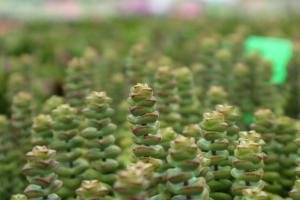Introduction
The rubber tree plant, also known as the Ficus elastica, is a common houseplant that has gained popularity because of its aesthetic appeal and air-purifying properties. While this plant is prized for its beauty and purported health benefits, there is one question that has lingered in the minds of many pet owners and parents: Is a rubber tree plant poisonous?
Background Information
The rubber tree plant is a member of the Ficus family and is native to Southeast Asia. It is classified as a toxic plant, which means that its leaves, sap, and other parts can be harmful if ingested by humans or animals. The plant contains a toxic substance known as ficin, which can cause a range of symptoms if consumed in large quantities.
Poisonous Properties of the Rubber Tree Plant
The rubber tree plant is considered to be moderately toxic, which means that it can cause significant harm if ingested. The ficin enzyme found in the plant is a proteolytic enzyme that can break down proteins in the body. If ingested, ficin can cause irritation and inflammation of the mouth, throat, and stomach. This can result in symptoms such as abdominal pain, vomiting, and diarrhea.
In addition to ficin, the rubber tree plant also contains small amounts of latex. This sticky sap can cause allergic reactions in some individuals, particularly those with latex allergies. Symptoms of a latex allergy can range from mild skin irritation to anaphylaxis, a severe allergic reaction that can be life-threatening.
Pet Safety
If you have pets in your home, it is important to consider the safety of your rubber tree plant. Dogs and cats are curious animals that may try to nibble on plants or play with the leaves. If ingested, the ficin enzyme found in the plant can cause gastrointestinal upset in pets. Symptoms may include vomiting, diarrhea, drooling, and loss of appetite.
In severe cases, pets may develop swelling and inflammation of the throat and airway, which can interfere with breathing. If you suspect that your pet has ingested any part of the rubber tree plant, it is vital to seek veterinary care immediately.
Child Safety
Parents of young children may also be concerned about the safety of the rubber tree plant. Toddlers and young children are notorious for putting objects in their mouths, and the leaves of the rubber tree plant may be tempting to chew or play with. If ingested, the ficin enzyme in the plant can cause gastrointestinal upset and other symptoms.
To protect young children from the potential dangers of the rubber tree plant, it is important to keep the plant out of reach. Place the plant in a location where it cannot be easily accessed by children, and supervise children closely when they are in the same room as the plant.
Treatment for Rubber Tree Plant Poisoning
If you suspect that you, your child, or your pet has ingested any part of the rubber tree plant, it is important to seek medical or veterinary attention immediately. The severity of symptoms will depend on the quantity of plant material ingested as well as the age and size of the individual.
Treatment may include inducing vomiting to remove the plant material from the body or administering activated charcoal to bind to the toxins and prevent further absorption. In severe cases, hospitalization and supportive care may be necessary.
Conclusion
In conclusion, the rubber tree plant is considered to be moderately toxic and can cause irritation and inflammation if ingested. Pet owners and parents should take precautions to protect their pets and children from the potentially harmful effects of the plant. If you suspect that anyone has ingested any part of the plant, seek medical or veterinary attention immediately. By taking these steps, you can enjoy the beauty of the rubber tree plant without risking the health and safety of your loved ones.

 how many times do yo...
how many times do yo... how many planted tre...
how many planted tre... how many pine trees ...
how many pine trees ... how many pecan trees...
how many pecan trees... how many plants comp...
how many plants comp... how many plants can ...
how many plants can ... how many plants and ...
how many plants and ... how many pepper plan...
how many pepper plan...































